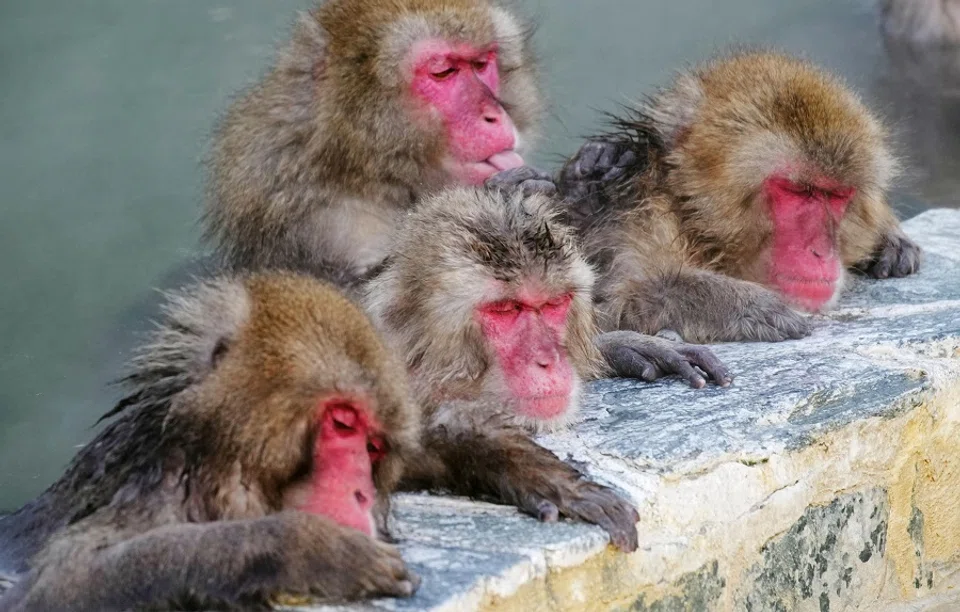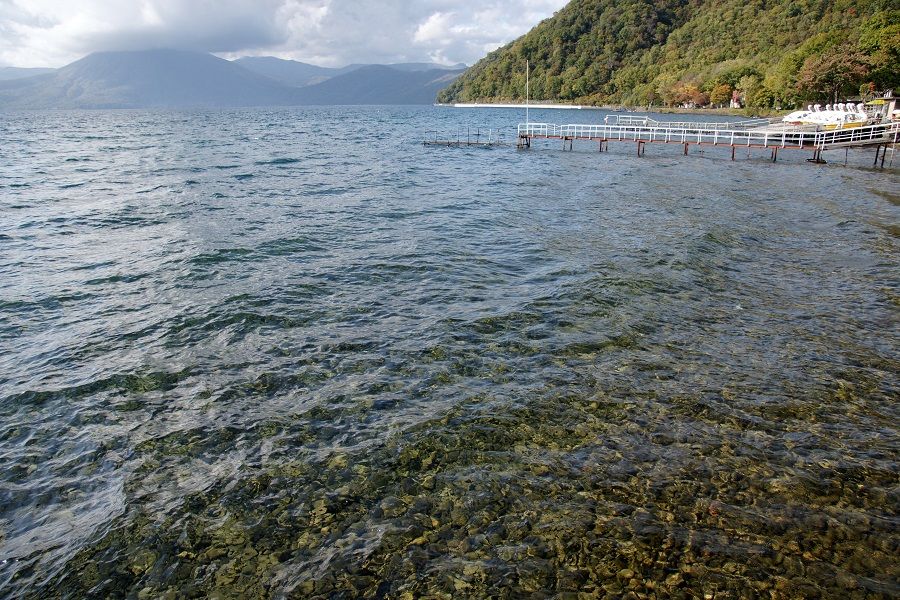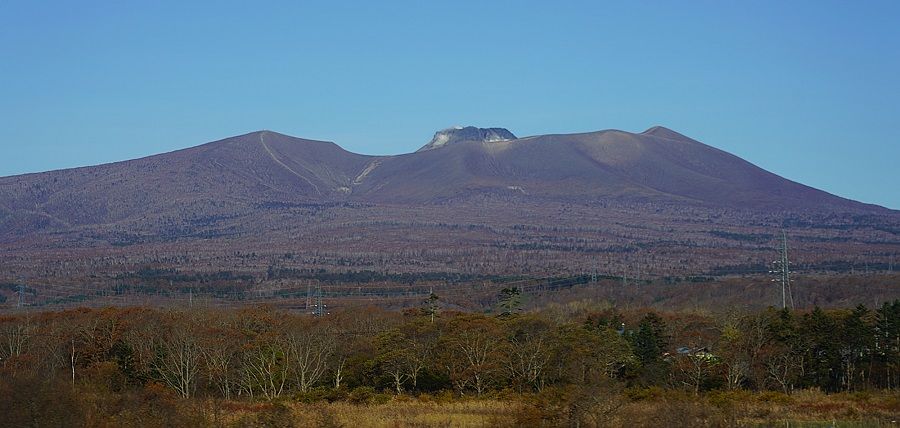More than a bath: From hot springs in ancient China to onsens in Japan

When I lived in Taipei in my youth, I would often accompany my father to the suburbs of Beitou District. We would visit his close friend Uncle Mou and some fellow residents from Shandong. They would always bring me to the Taiwan Power Company's guest house located at the foothills to take a bath in a hot spring.
Taking a bath at a hot spring is different from simply taking a bath. Before wading into the hot spring, you would have showered at the wash area just outside. And after settling down and soaking in the hot spring for ten minutes or so, you would start to feel relaxed and sleepy, as if having a drink or two. In that "tipsy" state, the foamy mist becomes a mystical fairyland. You are at peace, entering the spiritual realm or floating on clouds even.
After emerging from the hot spring, I would rinse myself off and throw on an oversized bathrobe. Literally unable to walk straight, I would stumble to a long corridor with large window views of great mountains. I would collapse into a rattan chair, watching the world go by. I gazed at the lush green mountains bearing down like crashing green waves and listened to cicadas chirping in a symphony movement of gold and iron. Lost in their endless summer afternoon arias, it was as if time was really slowing down and I would never leave that long corridor.
But time is a thespian that plays tricks on people. It can morph into a different character in an instant, turning an eternity experienced into an illusion in the recesses of the mind. Like a plaster covering a wound in your heart, peel a little off and you see the blood-specked sands of time. Over 60 years have passed since the fun days I had at the hot springs in Beitou.
Another hot spring, another memory
I recently attended a meeting in Sapporo, Hokkaido, Japan. Professor Sato from Hokkaido University said that he would pick us up from the airport and bring us on a 1-2 hour road trip around Lake Shikotsu before heading back to our hotel in downtown Sapporo. But our flight was delayed and it was already dark when we landed at New Chitose Airport. Alas, we couldn't see Lake Shikotsu in all its wondrous glory. Sato said, "It's okay. We will change our plans and watch Sapporo's night view on Mt. Moiwa tonight. When you guys leave, just before heading to the airport, we'll set out early in the morning and head to Lake Shikotsu first."

After a week in Sapporo, it was finally time to return home. It was then that Sato told us that we would be going to Lake Shikotsu to take a hot spring bath. An hour was enough and we would head to the airport after lunch. Oh, so he was thinking about taking us to a hot spring.
The Shikotsu caldera was formed by an enormous volcanic eruption about 40,000 years ago. Over 300 metres deep, the lake's crystalline waters never freezes as it is surrounded by hot springs. As it is part of a national park, the environment around the lake is protected, ensuring its pristine waters, lush mountains and dense forests are preserved and making it a popular tourist destination in Hokkaido.
The hot spring hotel we visited was the Marukoma Onsen Ryokan. It was founded in 1915 and started off as an open-air furo (a short, steep-sided wooden bathtub) adjacent to the lake. Since then it has become the oldest and most established hot spring hotel in the area.

In the past, men and women would bathe together in the same onsen, but this practice no longer exists today and I am not sure what the female furo is like. The hotel offers three types of public furos for men: indoor onsens categorised by temperature (38, 40 and 42 degrees Celsius); open-air onsens overlooking the lake; and natural open-air onsens that have stayed the way they were since the beginning. Sato and I stayed in each hot spring for about ten minutes, trying all the options from the ones indoors to those outdoors. We were totally naked in front of each other and literally had nothing to hide.
A miraculous cure
I liked the natural open-air onsen best, where the waters are cradled by volcanic lava and surrounded by ancient trees. Beyond the dam wrought from charcoal black volcanic lava lies the expansive Lake Shikotsu, and Mt Tarumae beyond it. As a scholar of Yangming Studies, Sato asked if this scene reminded me of being "one with nature" and of returning to the state of pure innocence. I nodded. But I was actually reminded of Japanese macaques bathing in hot springs in Hokkaido - just that I did not want to tell him...

Because Sato talked about being one with nature, I recalled that the ancient Chinese had also paid attention to bathing in hot springs and it was common knowledge that bathing in hot springs could cure ailments. The 31st chapter of Chinese geographer Li Daoyuan's (472-527) Commentary on the Water Classic (《水经注》) mentions the Shahe River that flows through Lushan (鲁山) county in Henan. It says that taking a bath in hot springs can cure diseases, and one of the most popular hot springs for this purpose would be the Huangnü hot spring (皇女湯):
The chapter goes on to describe the health benefits of the Huangnü hot spring, stating that it can "treat tens of thousands of the diseased". Its scalding water can also be used to cook rice, and drinking it would cure a hundred diseases. Taoist priests who bathed themselves in the water and drank it three times a day would feel relaxed and carefree. After 40 days, they would be cured of all diseases and be rid of all parasites.
When we talk about the healing powers of hot springs nowadays, Japanese reports are often cited, as if it was the Japanese who discovered this natural remedy. Actually, such remedies were already recorded in Taoist health and wellness texts from the Wei, Jin and the Northern and Southern dynasties to the Sui and Tang dynasties. I wonder if the officials sent on Japanese missions to Tang China had read those materials back then?
This article was first published in Chinese on United Daily News as "支笏湖温泉".
Related: My childhood days in Xiamen Street, Taiwan: Of invisible warriors, string puppets and spring pancakes | Cultural historian Cheng Pei-kai: A half-century journey around the globe to Hong Kong's Wu Kai Sha | 'Life is indeed like a dream': A cultural historian returns to the barbershop of his childhood | Taiwan's nostalgic flavours, the glitterati and the kamikaze | Beijing's instant-boiled mutton and sweet memories of childhood days in Taiwan
